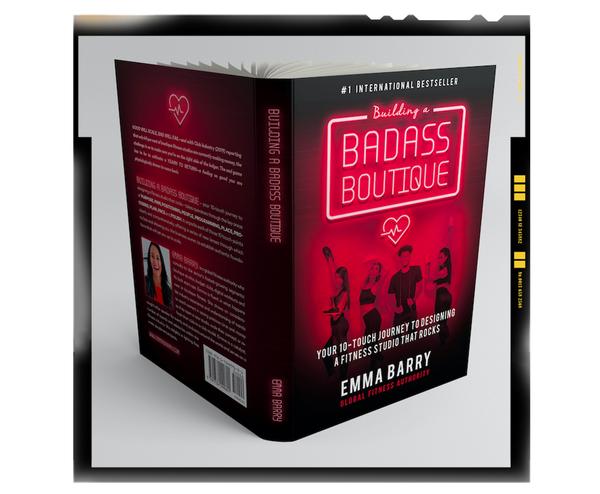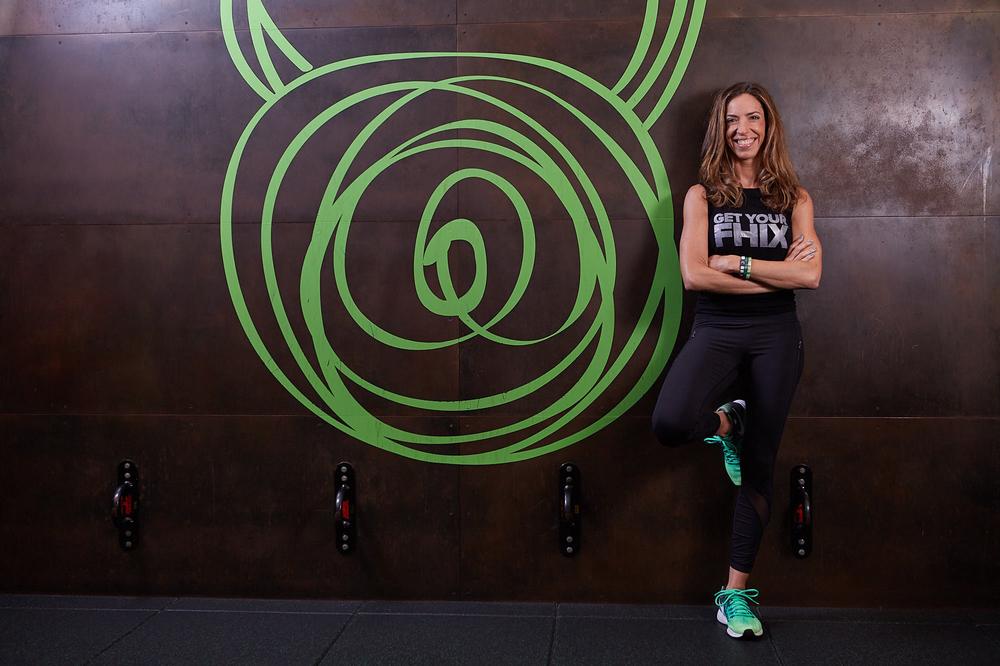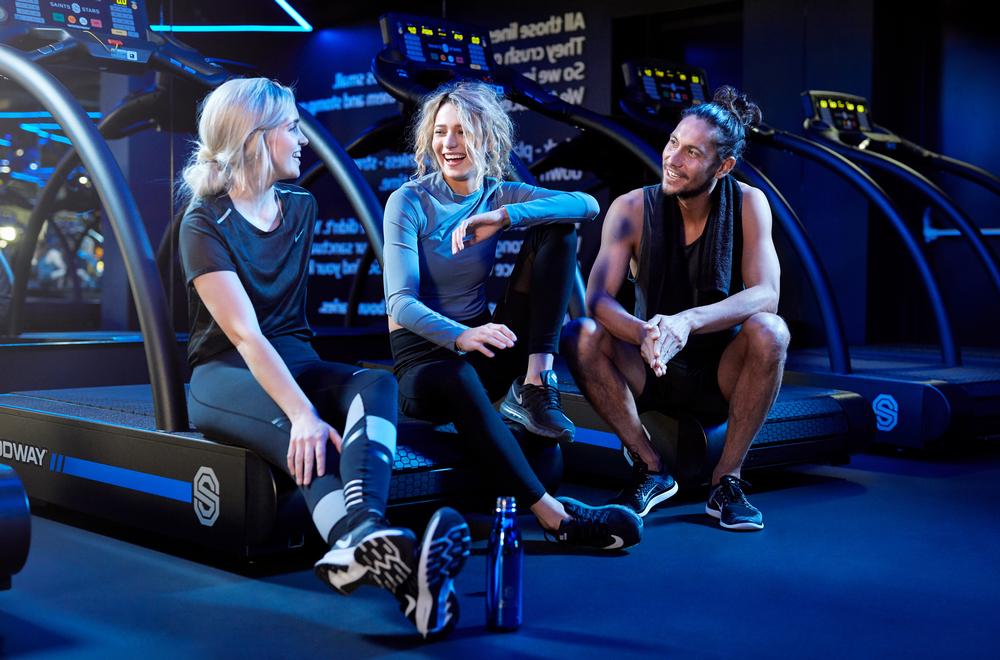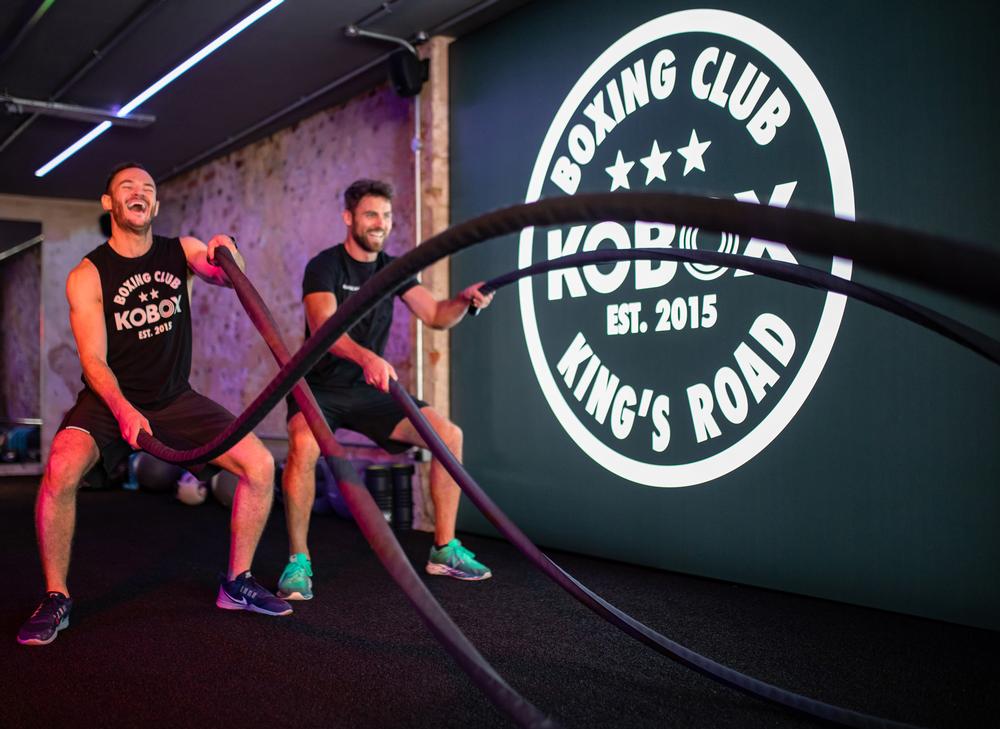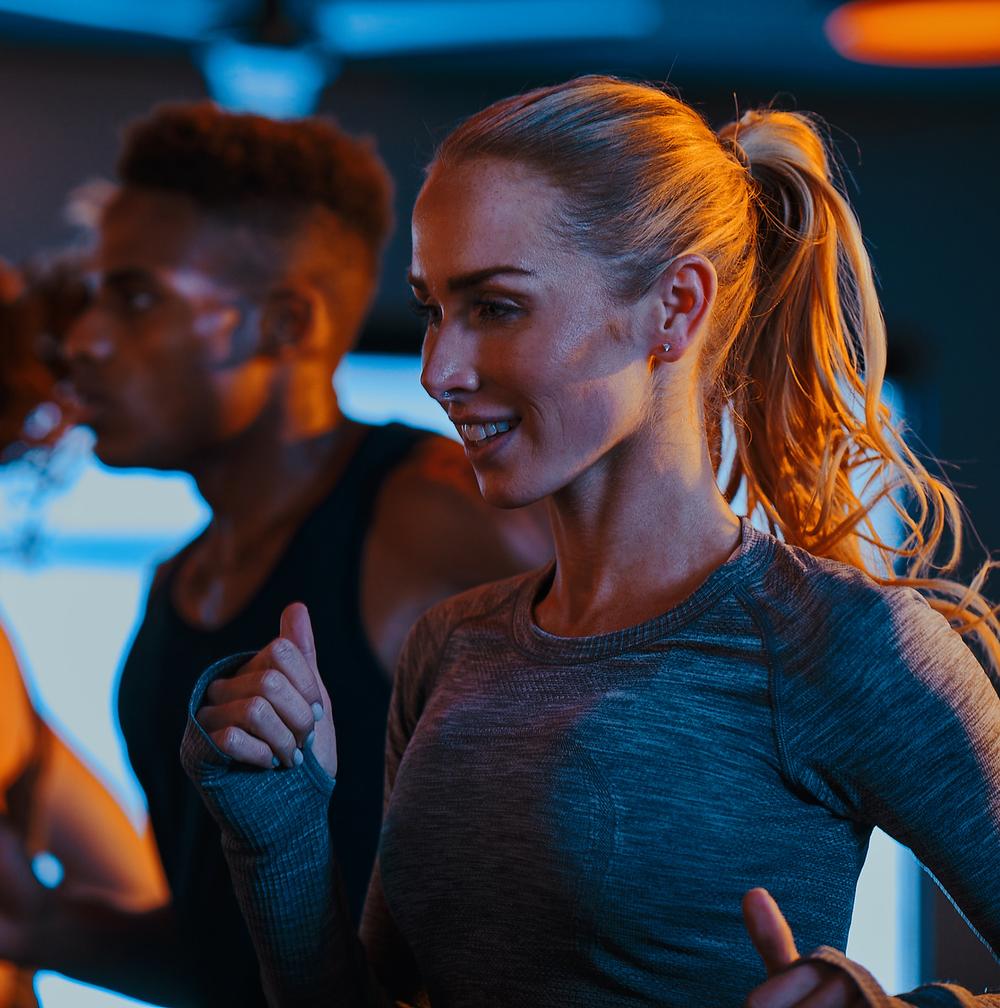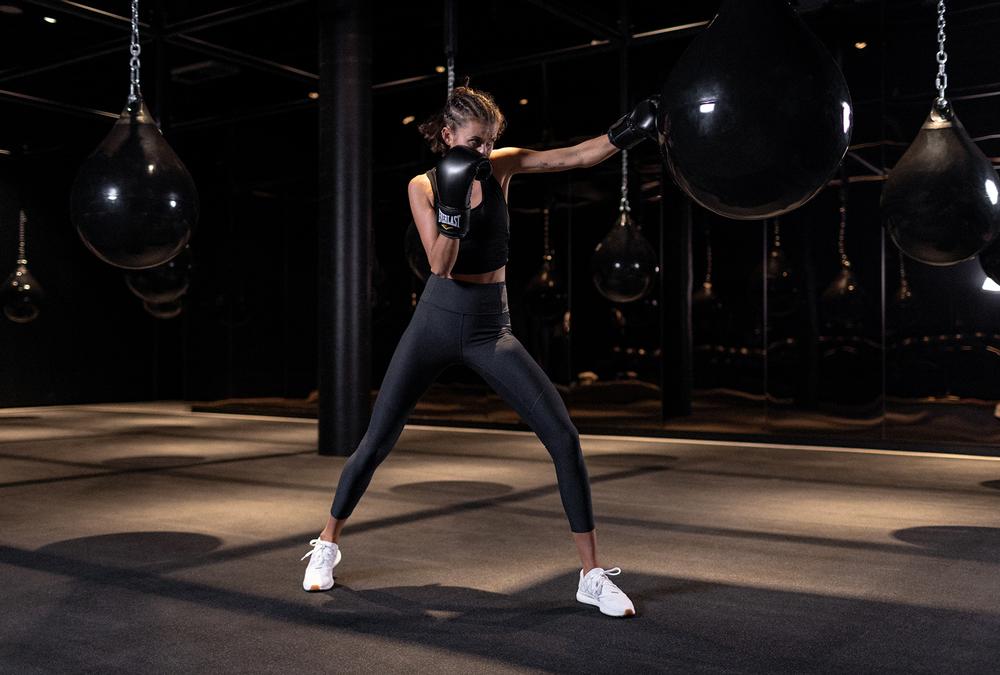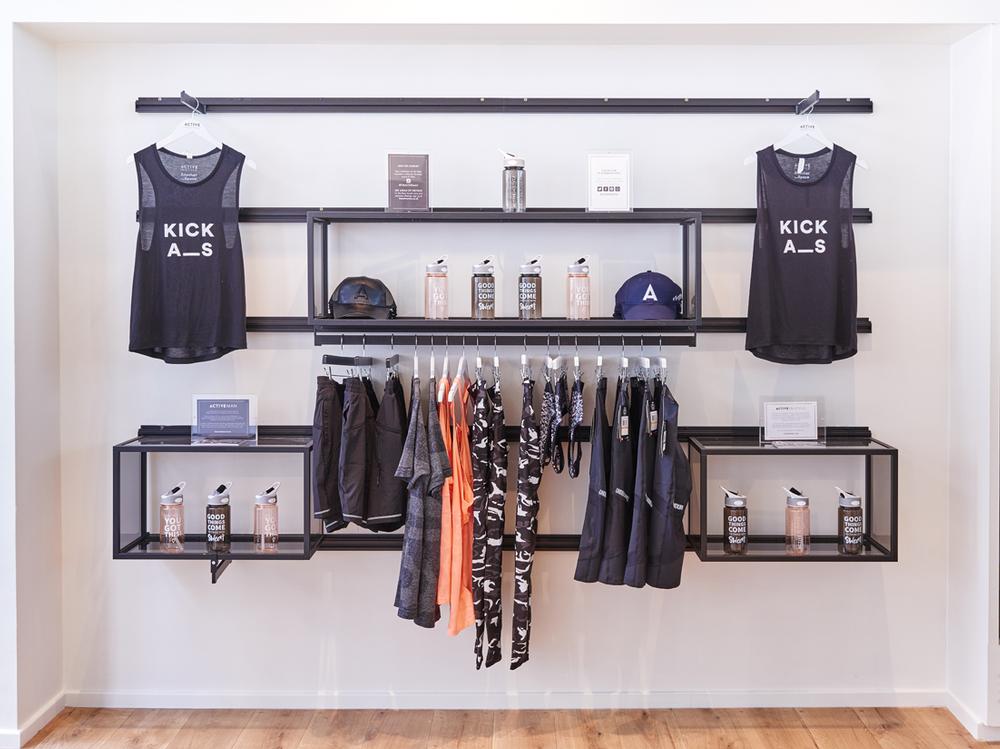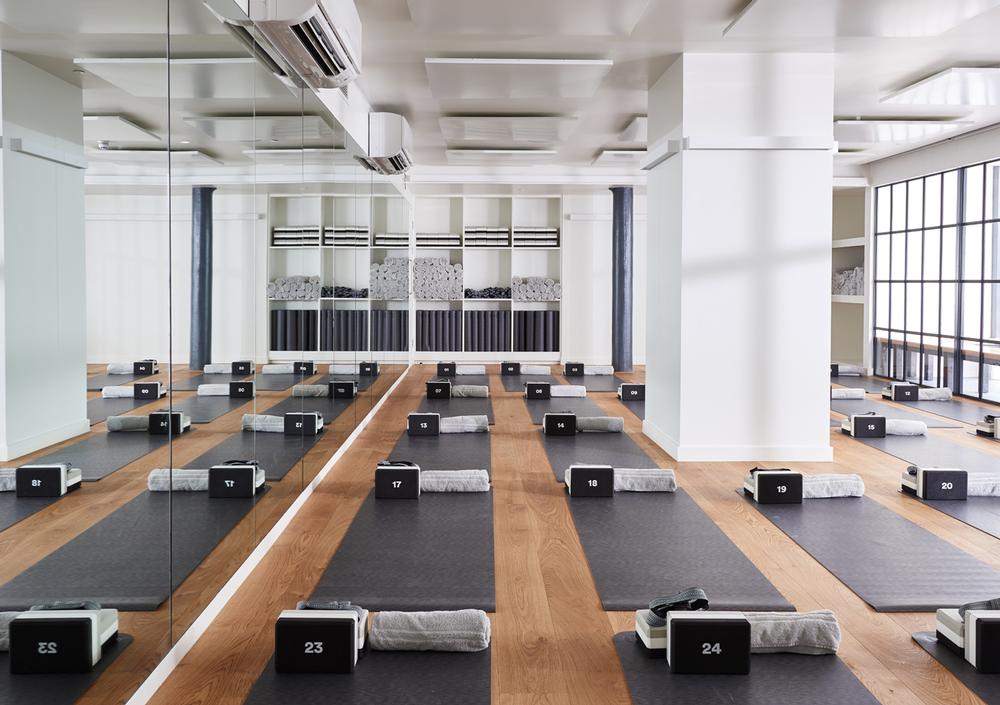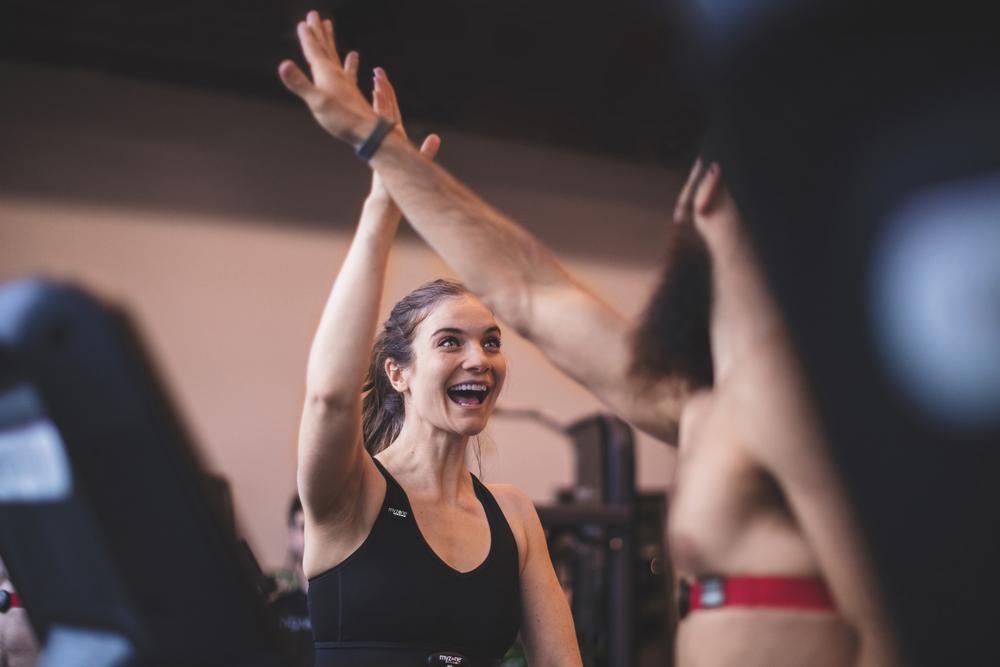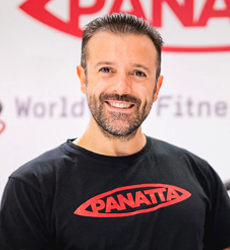What inspires you the most in the world of fitness?
Our intent. I love that we’re inherently good as an industry, trying our best to bring health and happiness to our communities. That we’re a collective movement. We draw a crowd and get to celebrate the joy of our bodies and minds.
What differentiates boutiques from standard gyms?
Focus. Boutiques present one idea (or a small selection of concepts) to one specific market, with one undiluted message, across multiple platforms. Done well, the simple elegance of curating a single, emotive customer journey from touchpoint to touchpoint – engaging well before check-in and extending way beyond the workout – is intoxicating.
Good boutiques are offering the whole package – the community. The hashtag. The T-shirt. The ritual. The retreat.
What are the three main factors needed to create a badass boutique?
The three I observe in undeniable boutique businesses are:
1. Brand – The why?
Comprised of addressing your purpose, pain and positioning.
You’re placed in the community to meet a need – the feeling, the message, the simply executed concept. A love-mark that raving fans happily wear across their chest, inspiration they weave into conversation and post on the ‘gram – like, hourly.
It’s no mistake that many successful boutiques have a baller brand strategist sitting at their core. Fhitting Room from NYC is a perfect example, where Kari Saitowitz – with an executive pedigree in marketing – offers a phenomenal case study of unpacking her triple threat. Firstly the name – ‘Fhitting Room’ (which stands for functional high intensity training – plus a fitting room is where people go to change). Secondly, the colour green (a unisex shade that symbolises growth), and the scribble kettle-bell logo (a ridiculously effective fat burner presented in a non-intimidating way).
2. Product – The what?
People, programming and place make up the tangible products that draw people to the honeypot of fitness.
Coaches are modern day preachers leading members and spend across a range of lifestyle goods and services. Instructors have become influencers, the ‘pied pipers’ of fitness, fuelled by reality TV, celebrity clients and social media.
Programming gravitas has burgeoned in boutiques in the wake of CrossFit WODs, formulaic solutions like F45’s circuit-based, functional training and Orangetheory’s heart rate-based workout protocol.
Add in the many rhythm-based formats spanning the hot trends of barre, cycling, treadmill, HIIT, boxing and yoga hybrids that are enticing new audiences from our world of increasing sedentary over-consumption.
The boutique sector has accelerated experiential fitness by engaging with multi-sensory environments; KOBOX – ‘where fight club meets nightclub’, Saints & Stars – where you may just be delightfully surprised, as I was, by perching on a heated seat, or Barry’s – where the ‘red room of pain’ bathes you in sensory stimulation to motivate you to leave it on the floor.
3. Systems – The how?
Process, plan and pace logistically drive how the best boutique health and fitness brands deliver the experience consistently, comprehensively and energetically.
We live in enabled, data-led times – the age of frictionless commerce. We demand seamless online and offline experiences. The best brands “automate the mundane” says Bryan O’Rourke, president of the Fitness Industry Technology Council.
All the things we don’t need to see, like booking and payment and waivers, are taken care of invisibly.
And then we need systems that support living the culture out loud, by bringing more power to the human moments of connection and camaraderie. Cue the word walls, team and personal challenges and clever marketing nudges.
When looking at economic lifecycle, what’s the next stage for boutiques?
“Good will scale. Bad will fail”. Consolidation, collaboration, extension and extinction lie ahead.
With only 40 per cent of US boutiques making money, as reported by Club Intel in 2019, the sustainability of the current economic model is shaky at best in many places.
Things are also shifting – Third Space opting out of its baby sister boutique, Another Space, for example.
Then there are big-box exemplars, such as Midtown Athletic, Les Mills Auckland, Gymbox and Virgin Active that are integrating boutique sensitivities into their overall membership model on a club-in-club basis.
New boutique club models like Styles Studios Fitness (USA) and House Concepts in Vancouver are hosting several boutique experiences under one roof and putting pressure on single-offer sites as a result.
Consolidation and collaboration will also happen within and between brands, and successful boutiques will scale and refit non-successful sites to grow their portfolios.
Classes will come together, either in physical settings – like club-in-club – or with aggregators. There’ll be more multi-site access offerings such as Xponential’s X-Pass which umbrellas its eight franchise brands: AKT, StretchLab, CycleBar, Pure Barre, Stride, Row House, YogaSix and Club Pilates.
In short, we’re moving fast towards a world of ecosystems.
Extensions will happen within brands – an example is Barry’s which is piloting its bike workout ‘Ride’ alongside its existing treadmill workout, while digital expressions of many brands will start to reach beyond bricks and mortar to capture the growth in at-home and on-demand workouts.
We’re at the sharp end of the experience economy, where people now value experience above all.
I love how Pine and Gilmore capture the complex art of delivering today’s preferences in their work on the experience economy, saying “Fundamentally, customers don’t want choice, they just want exactly what they want.”
Did the book write itself, or was it hard work?
Both. It was lovingly written on planes, trains and in hotel rooms across three continents. I also joined the 5.00am club to write before life happened and pulled a few all-nighters to push on through towards the end.
It was a joy to stop repeating myself over numerous coffee dates and get things down on paper once and for all.
Of course it was tough, but I had a huge support network: a nine-month business accelerator that demanded the book be produced, an accountability group that didn’t take no for an answer, 65 people who contributed to the book and expected to see their stories up in lights, the ukactive SWEAT book launch date (made more interesting when it was shifted from March to February meaning I had to self-publish – at pace).
My cheerleading husband sealed the deal by calling me at 3.00am my time – wherever I was – to tell me I was great, to keep going – and to get some sleep.
My gamechanger was my editor, Kate Cracknell, who thankfully said ‘yes’ to taking on her first book.
Having successfully worked together on previous features, I knew she was the pea to my pod.
Working across different time zones meant we could do lightning fast turnarounds on chapters, and – like my life – the book was written in transit, edited in London, designed in NYC and promoted from Vancouver.
With the purchasing power of our global fitness whanau, we shot to #1 International Best Seller on Amazon in February 2020. Gotta love tech and these times.
Will you write more and if so, what will they be about?
Yes. I’ve had a chip on my shoulder since leaving Otago University in New Zealand, with one English paper and a double degree on the table. I expect this feeling of inadequacy will express itself through more published work.
I also learned through the process that writing is not a destination – like Tuscany – but a muscle, like fitness.
And now I’ve exercised that muscle enough, it’s become a habit, so now I’m cursed with leaping out of bed at 5.00am, pen in hand – or rather, MacBook at fingertips.
To be honest, the book I actually set out to write was 100 PUMP Memoirs of an International Master Trainer – no-holds barred, tongue-in-cheek ‘stories from the road’ focusing on the early days of Les Mills. But the suits told me to grow up and write something business-like.
I may just go back to remember the bad old days of #gohardorgohome, because I’m a rule breaker at heart. We’ll see.
Right now, I’m focused on the workbook to support Building a Badass Boutique, for those who can’t make the masterclasses but want a deeper dive into the better boutique businesses.
Find out more: www.buildingabadassboutique.com









